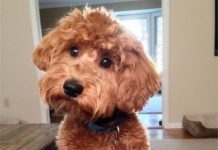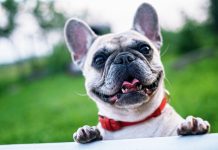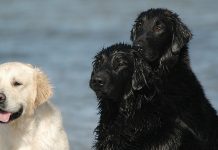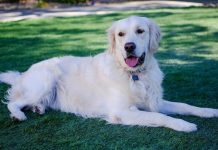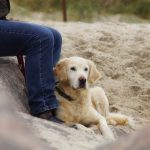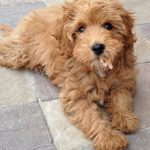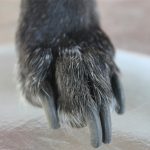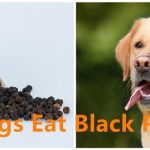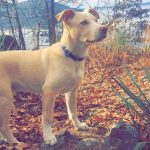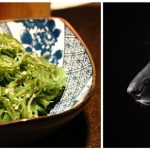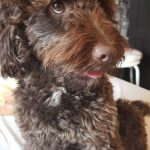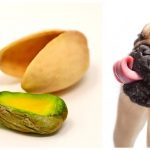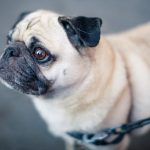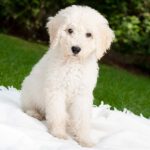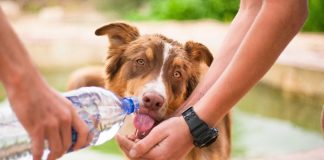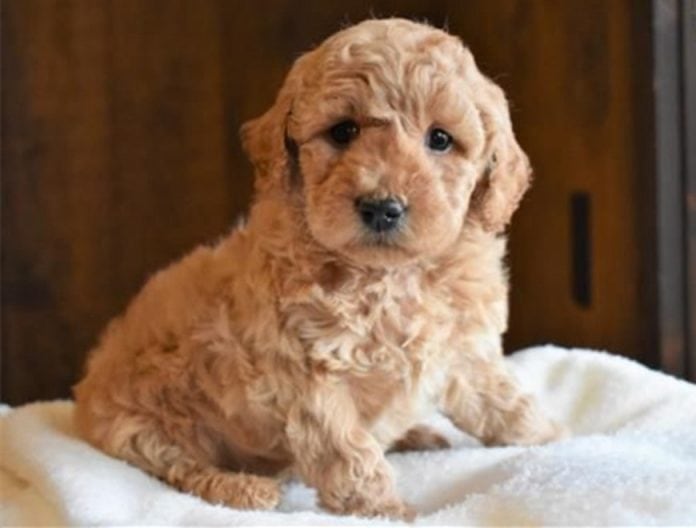
The F2B mini Goldendoodles are sweet-looking, homely, and friendly pets that can serve as guide dogs, therapy dogs, agility dogs, etc. due to their high intelligence and ease of training. Apart from their unique properties, they’re also very popular and more searched for than either of their purebred parents, which puts them in high demand.
An F2B mini Goldendoodle is a second generation mini Goldendoodle backcross, bred in two ways by either crossing a second generation mini Goldendoodle (F2) with a miniature Poodle, or crossing a first generation miniature Goldendoodle (F1) with a first generation miniature Goldendoodle backcross (F1B). Both ways give a pup that is 67.5% Poodle and 37.5% Golden Retriever.
While being a popular hybrid for many great reasons, the Goldendoodle breed is mostly sought after due to its non-shedding properties and this trait is only common to the Poodle parent in the mix, hence the need to increase the percentage of the Poodle in the Goldendoodle genes to a third of a quarter (3/4). This explains why most hybrid dogs have a Poodle as a parent in the mix.
However, due to the laws of genetic natural selection, it is not possible to predict which of the traits of a parent Poodle a Goldendoodle will inherit, or which dominant traits it’ll possess. This is why we’re discussing this particular second-generation Goldendoodle backcross (F2B) and why most breeders who aim to produce a non-shedding hypoallergenic dog concentrate on breeding mostly within this generation that contains a higher percentage of the parent Poodle in them.
We will elaborate on the properties of this second generation of Goldendoodle backcross (F2B) and since we already know the breeding routine necessary in generating them, we can focus on the possible ways to groom and maintain a healthy F2B second generation backcross pup.
Properties
Though they are obtained by breeding the first generation (F1) and the first generation backcross (F1B), they are not too far down the breeding tree to not be able to possess the main traits of the original hybrid. They are not also susceptible to the health complications associated with crossbreeding.
Like those of the first generation Goldendoodles, their coats are curly, flat or wavy. What’s more, no one can be sure what the permanent coat of a Goldendoodle will look like. This is because they can change their color and coat type between birth and adulthood.
During this time, your pup will shed a lot and it will do it in 2-3 phases before attaining its permanent non-shedding adult coat. The coat type of an adult F2B Goldendoodle can be predicted by observing the coat formation of its parent breeds.
Another property that the Goldendoodles inherit from their Poodle parent is having less body odor when compared to other dogs. This is because their coats barely retain dirt and even when they do, after the dirt dries up, it can easily be brushed off since they don’t have double coats where dirt can begin to accumulate in the undercoat if not properly taken care of.
Because it comes from miniature parents, when it comes to size, a second generation mini Goldendoodle backcross (F2B) will weigh about 15 to 25 pounds on average when reaching adulthood.
Grooming
In plain English, the fact that a dog’s coat is non-shedding means that the coat will grow long without breaking off, unless it’s trimmed, just like is the case with human hair. This requires that the owner will have to make time at least two to six times per year, to trim the Goldendoodle’s coat. The frequency of doing this depends on the particular Goldendoodle and how fast its hair grows because just like in humans, hair growth differs from one dog to another.
Like every other Goldendoodle, the F2B mini Goldendoodles require attention and need to be walked from time to time due to their average energy level. They also have to be socialized properly in order to be aware of their environment and get a hang of what’s considered to be good behavior and what not, since they’re fast learners.
Health
For the miniature parent Poodle, screening should be carried out through DNA tests to check for a bleeding disorder, the Von Willebrands disease (vWD), before breeding. Annual CERF (Canine Eye Registration Foundation) examinations should also be done prior to breeding, and an OFA (Orthopedic Foundation for Animals) or a PennHip examination is as well required in order to rule out chances of a mini Goldendoodle pup inheriting the parent dog’s hip dysplasia, a condition which they’re known to be prone to.
Conclusion
In order to maximize genetic diversity and to get the hypoallergenic properties of the Poodle, the second generation mini Goldendoodle backcross (F2B) is the more preferred breed. Generally, they shed very little to nothing, which can also be a function of the miniature Goldendoodle’s parent non-shedding characteristics which they inherited.

